How and When to Harvest Garlic

We planted our garlic cloves last October, they grew throughout the spring and winter, and they were ready for harvest in the month of July. How and when is the right time to harvest garlic? Are we also following the right harvesting process? Here, we are going to carefully see why garlic is one of those plants where choosing the right time is crucial.

The harvest period lasts through the spring and prolong into the summer. This is because of the different types of garlic growth and the weather patterns.
Tips on How and When to Harvest Garlic
- Identifying the three harvests of garlic
- When and how to dig the bulbs
- When to watch the greens
- How to handle or care for the garlic
- The curing time
- How to store garlic
- Garlic braids as a method of storage
- How to apply the garlic
Identifying the Three Harvests of Garlic
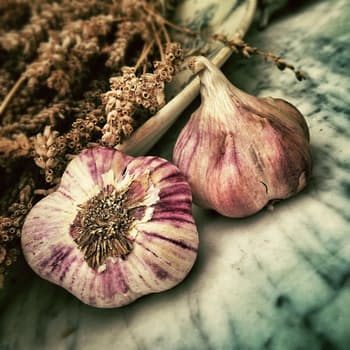
Interestingly, garlic has three crops or harvests which we choose to use:
- In the early spring, farmers should conduct the first garlic harvest. During the period, the garlic is close to a foot tall. Cut some greens and use them while cooking as a source of fresh garlic.
- The second type of garlic crops are the scapes. In the middle of June, the different garlic hard necks appear around scape or stalk. After the scapes curl, they eventually fall off. A process that makes it possible for the plants to place their energy on the formation of bulbs.
- Lastly, we have the main garlic harvest. This involves digging out the underground bulbs, curing and storing them for use during winter. In this process, remember that careless harvest may lead to huge damages and even losses.
When and How to Dig Up the Bulbs
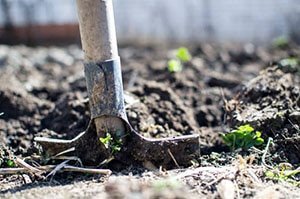 Identifying the most appropriate time to dig up the bulbs is rather tricky. We note that when you digging them too early, it may result in premature and under-size garlic bulbs. It is necessary to identify how many cloves in a head of garlic. Through this, we can be able to distinguish under-grown garlic bulbs during harvest. Besides, prolonging their harvesting time may result in the bulbs lacking the protective cover that surrounds their cloves.
Identifying the most appropriate time to dig up the bulbs is rather tricky. We note that when you digging them too early, it may result in premature and under-size garlic bulbs. It is necessary to identify how many cloves in a head of garlic. Through this, we can be able to distinguish under-grown garlic bulbs during harvest. Besides, prolonging their harvesting time may result in the bulbs lacking the protective cover that surrounds their cloves.
When to Watch the Greens
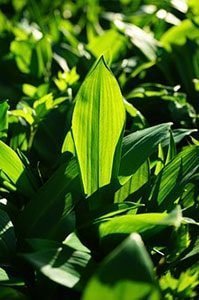 The leafy parts of the garlic plant begin to wither off from the bottom as they move upwards. As the harvesting time approaches, here is what to watch for the behavior of the leaves. If the bottom three to four leaves have withered and the top five or six still appear green, then this is the best time to dig up the bulbs.
The leafy parts of the garlic plant begin to wither off from the bottom as they move upwards. As the harvesting time approaches, here is what to watch for the behavior of the leaves. If the bottom three to four leaves have withered and the top five or six still appear green, then this is the best time to dig up the bulbs.
For those who may not be sure, we advise you to dig up one or two bulbs and examine them appropriately. The characteristics of a mature bulb include:
- Mature bulbs are fully swollen
- They are well-sized
- Their wrappers are partially decomposed
How to Handle and Care for the Garlic
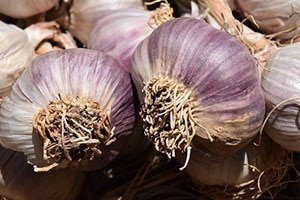 For farmers with a sandy loam soil, any type of dirt can be swept clean. For other soils such as clay, the process is a little bit different. They require proper cleaning by washing them off by using the best lawn sprinkler or just a gentle spray of water.
For farmers with a sandy loam soil, any type of dirt can be swept clean. For other soils such as clay, the process is a little bit different. They require proper cleaning by washing them off by using the best lawn sprinkler or just a gentle spray of water.
How to Store Garlic
The best storage temperatures are those of lows of 32-35 F, or similarly, a room temperature of 60-70 F, during low humidity. Avoid storing garlic in the fridge because temperatures of 40-50 F lead to the premature growth of the bulbs.
Garlic Braids as a Method of Storage
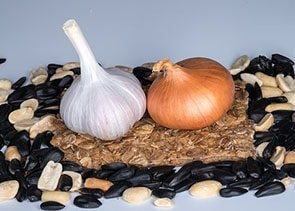 Using garlic braid is an effective way of storing garlic. Some braids appear as held together with strings and for hard neck garlic; they are in the form of string braids. For decorative purposes, you may choose to decorate those using dried grasses.
Using garlic braid is an effective way of storing garlic. Some braids appear as held together with strings and for hard neck garlic; they are in the form of string braids. For decorative purposes, you may choose to decorate those using dried grasses.
Uses of Garlic
The garlic plant is normally used in different ways.
- It is eaten
- To add flavor in food
- For health purposes
Conclusion
As a garlic farmer, I have been able to increase my harvesting rate by following the above guidelines. I hope that you have gained something by going through these small tools. However, with the growing levels of innovation, you can never rely too much on your own understanding. Therefore, give us some of the methods you use to harvest garlic in the comment section below.

